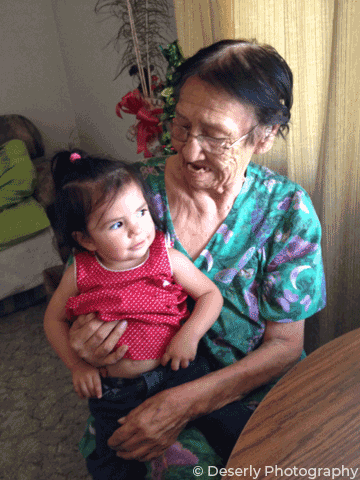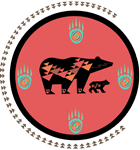
The resources included here provide Tribal communities with a variety of information and tools that can be used to answer key questions related to the development, implementation, and sustainability of culturally-based and resilience enhancing programs. Resources range from a review of the literature to program implementation and sustainability tool kits for programs in Native communities. Please click on the question below that corresponds to the area that you would like to learn more about:
- What do we know about resilience-based programs in Indian Country?
- What are some approaches to implementing a new program in my community?
- How can I use Indigenous Ways of Knowing to inform my program?
- How can I ensure the program is helping the community?

What do we know about resilience-based programs in Indian Country?
CNCFR Literature Review
Many prevention models in Indian Country build resilience by using Tribal cultural values, the transmission of family traditions, and the experiences of Tribal youth. Guided by these values, traditions, and experiences, Tribal communities have launched initiatives showing great promise in developing resilience-based models for child abuse prevention. In this literature review, the Center takes stock of the literature on practices that have been used in Tribal communities to confront and solve child maltreatment, with an emphasis on Tribally owned and internally developed practices, practices that have undergone a transformative process of cultural adaptation, and evidence-based practices that show promise for cultural adaptation.
Click here to read the review’s summary and here to download a pdf of the review.
CNCFR Environmental Scan
The CNCFR Environmental Scan (ES) identifies demonstrations of innovative cultural and practice-based strategies that are improving the lives of Tribal families and children within Indian Country.
Click here to read the scan’s summary and here to download a pdf of the scan.
CNCFR Catalog of Programs
Developed by the CNCFR and its workgroups, this catalog is a collection of child risk reduction and family resilience enhancing efforts in Indian country that expands the reach of evidence-informed, practice-based, and promising practices. The catalog allows you to search and view interventions, programs, and models that have been used in Indian Country.

What are some approaches to implementing a new program in my community?
Child Welfare Organizational Capacities
Developed by the Child Welfare Capacity Building Collaborative, this Brief organizes key aspects of child welfare organizational capacity into five general categories or dimensions that can be used to examine the health and functioning of an organization or to consider factors that may affect an organization's ability to initiate and sustain change.
Building Capacity to Manage Change and Improve Child Welfare Practice Brief
Developed by the Child Welfare Capacity Building Collaborative, this Brief outlines a process for carrying out successful change and implementation initiatives, including the progression through a series of phases, each with distinct and sequential activities.
Implementation Plan Tool
Developed by JBS International, Inc. on behalf of the Children’s Bureau, this resource is designed to serve as a tool for tribal organizations looking to implement a new program or innovation. The tool walks users through a set of questions to assess existing tribal program implementation supports followed by an outline of key implementation plan elements that should be considered throughout implementation.
Pathway To Change
The Pathway to Change is a tool for developing solutions to complex problems using a collaborative process for defining a long-term vision for and the steps to achieve that goal. It consists of a 7-step process for developing an Impact Model, a visual tool that provides a map for achieving program goals. The Pathway to Change was created by the Capacity Building Center for Tribes and adapted for the work with the Tribal communities through CNCFR, both funded by the Children’s Bureau.

How can I use Indigenous Ways of Knowing to inform my program?
The Cultural Guide for the Development of Tribal Child Welfare Products
The Cultural Guide for the Development of Tribal Child Welfare Products provides organizations, teams, and individuals developing Tribal child welfare products with guidance about how to develop those products in ways that reflect and embrace Tribal culture and values. This guide helps product and tool developers to retrieve and incorporate cultural knowledge while serving as an instrument that helps to assure that products developed collaboratively with these communities include the acknowledgement and recognition of their contributions to the fields of child welfare, education, social services, research, and evaluation. The guide addresses 12 domains: Respect for Tribal Sovereignty; Historical Trauma and Historical Strengths; Respect for Tribal Values; Language; Leadership; Indigenous Ways of Knowing (IWOK) and Cultural Protocols; Relationship Building; Cultural Appropriation; Cultural Applicability and Cultural Tailoring; Reciprocity; Spiritual Protocol; and Targeted Community Service Provider Review of Tools.
Community-Based Participatory Research (CBPR) Conceptual Model
CBPR is an orientation to research that facilitates respect and appreciation for indigenous ways of knowing by engaging community members as partners in research design and intervention development. The CBPR Model was developed by a national multi-institution collaboration to provide a visual framework of the contributions of community-academic partnership processes to improve systems, policies, community capacities, and health equity outcomes. Community partnerships can use the CBPR model for collective reflection and evaluation to enhance their partnering practices and achieve their health and research goals.
Indigenous Ways of Knowing: Implications for Participatory Research and Community
This article from the January 2008 American Journal of Public Health provides a brief overview of the problems commonly encountered during research partnerships in indigenous communities. Using this historical context, the authors describe some examples of successful research partnerships and developments in participatory research. The article also provides specific examples of indigenous ways of knowing that have informed the possibilities of research design.

How can I ensure the program is helping the community?
The Journey of Collaborative Evaluation With Tribal Communities
CNCFR worked closely with five Tribal communities to design or refine, implement, and evaluate their child maltreatment prevention/intervention programs. To support the continued efforts in Indian Country and communities in a non-Western approach, the Center partnered with the Children’s Bureau to document the story of the project, including key insights and lessons learned in collaborating with Tribes and in implementing child welfare programming in Indian Country. These lessons describe how a non-Indigenous organization can be successful in collaborating with Tribal organizations and communities, highlighting how adjusting practices, behavior, language, and attitudes led to better results for us, our partners, and the communities we worked with.
A Roadmap for Collaborative and Effective Evaluation in Tribal Communities
Many Tribal communities can recount negative experiences that have created a distrust of research and evaluation. Evaluation activities have generally been imposed on Native communities by funding agencies that view evaluation from the dominant cultural paradigm and failing to recognize the sovereignty of Tribes and to take advantage of long traditions of successful evaluation strategies that draw on indigenous practice. To address these challenges with respect to child welfare, the Children’s Bureau formed a stakeholder workgroup and developed this Roadmap for co-creating collaborative and effective evaluation to improve Tribal child welfare programs.
Medicine Wheel Evaluation Framework
This guide is intended to introduce the reader to the Medicine Wheel, outlining its history and uses, and to show how the Medicine Wheel can be used as an evaluation framework. We know that this framework is not appropriate for every organization or every project, but we do hope that its use will enable some to be able to capture the stories and qualitative results that are often overlooked.
Adapting Western Research Methods to Indigenous Ways of Knowing
This article from the December 2013 issue of the American Journal of Public Health presents a case study of an intervention research project to exemplify a clash between Western research methodologies and Indigenous methodologies and how reconciliation could be attempted. The authors also offer implications for future research based on lessons learned from Native American community partners who voiced concern over methods of Western deductive qualitative analysis.
Culturally Responsive Indigenous Evaluation and Tribal Governments: Understanding the Relationship
From the book Indigenous Evaluation. New Directions for Evaluation, this chapter, written by Waapalaneexkweew (Nicole Bowman, Mohican/Lunaape) and Carolee Dodge-Francis, examines four overarching content summary areas for culturally responsive indigenous evaluation (CRIE): historical and legal foundations; design approaches; application; and practical CRIE strategies for strengthening professional practice and building evaluation industry capacities for CRIE.
Looking Backward but Moving Forward: Honoring the Sacred and Asserting the Sovereign in Indigenous Evaluation
Abstract: Culturally responsive evaluation and culturally responsive Indigenous evaluation (CRIE) within the broader field of evaluation are not often included in Western literature nor are they known or used by the majority of mainstream evaluators. In order to address this literature and practice gap, this article offers an overview and a broader origin story of CRIE prior to colonial or European contact in the United States and gives an overview of the historical, theoretical, and practical foundations for conducting CRIE in a contemporary evaluation context.
Culturally Responsive Indigenous Evaluation: A Practical Approach for Evaluating Indigenous Projects in Tribal Reservation Contexts
Abstract: Culturally responsive evaluations in Indigenous or Tribal government reservation geographic contexts are complex and multifaceted studies. These contexts include the intersection of multiple legal jurisdictions across federal, state, and Tribal governments based on funding source(s) and implementation site(s). Through a contemporary case example, the authors provide a framework for co-constructing a culturally responsive evaluation design and describe practical strategies for evaluating a federally funded program implemented within a Tribal government reservation context.
Culturally Responsive and Indigenous Evaluation Bibliography and Resource List
This document was compiled by Bowman Performance Consulting and includes bibliographical references and links to websites and other resource materials related to Culturally Responsive and Indigenous Evaluation (Updated: October 2018).


